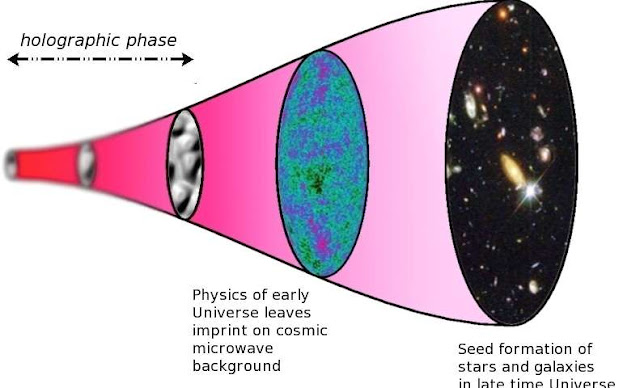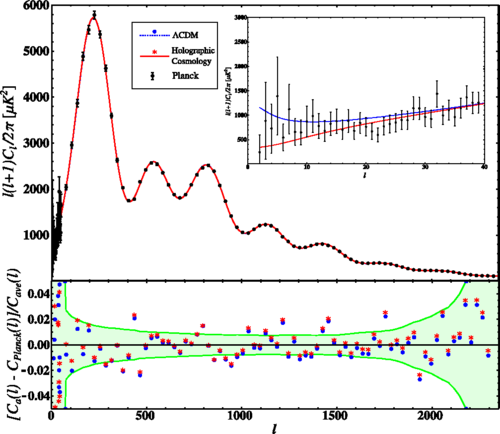Substantial evidence we live in a vast and complex holographic universe
by noreply@blogger.com (brian wang) from NextBigFuture.com on (#2AV4X)
A UK, Canadian and Italian study has provided what researchers believe is the first observational evidence that our universe could be a vast and complex hologram.
Theoretical physicists and astrophysicists, investigating irregularities in the cosmic microwave background (the 'afterglow' of the Big Bang), have found there is substantial evidence supporting a holographic explanation of the universe - in fact, as much as there is for the traditional explanation of these irregularities using the theory of cosmic inflation.
The researchers, from the University of Southampton (UK), University of Waterloo (Canada), Perimeter Institute (Canada), INFN, Lecce (Italy) and the University of Salento (Italy), have published findings in the journal Physical Review Letters.
A holographic universe, an idea first suggested in the 1990s, is one where all the information, which makes up our 3D 'reality' (plus time) is contained in a 2D surface on its boundaries.

 Angular power spectrum of CMB temperature anisotropies
Angular power spectrum of CMB temperature anisotropies
Arxiv - From Planck data to Planck era: Observational tests of Holographic Cosmology
Physics Review Letters - From Planck data to Planck era: Observational tests of Holographic Cosmology
Read more










Theoretical physicists and astrophysicists, investigating irregularities in the cosmic microwave background (the 'afterglow' of the Big Bang), have found there is substantial evidence supporting a holographic explanation of the universe - in fact, as much as there is for the traditional explanation of these irregularities using the theory of cosmic inflation.
The researchers, from the University of Southampton (UK), University of Waterloo (Canada), Perimeter Institute (Canada), INFN, Lecce (Italy) and the University of Salento (Italy), have published findings in the journal Physical Review Letters.
A holographic universe, an idea first suggested in the 1990s, is one where all the information, which makes up our 3D 'reality' (plus time) is contained in a 2D surface on its boundaries.

 Angular power spectrum of CMB temperature anisotropies
Angular power spectrum of CMB temperature anisotropiesArxiv - From Planck data to Planck era: Observational tests of Holographic Cosmology
Physics Review Letters - From Planck data to Planck era: Observational tests of Holographic Cosmology
Read more